Journey to Factum's workshops, where amazing facsimiles of art masterpieces are created
At Factum Arte, in Madrid, there is a unique, fascinating and surprising atmosphere. It is not a museum or an art gallery: it is a place where history, antiquity and beauty dialogue with the latest digital technologies. Sketches of classical fragments, Renaissance busts and Baroque statues, casts of plastic works of all ages, provenance and size; bas-reliefs, hieroglyphics and sarcophagi coexist with reproductions of ancient maps, replicas of canvases by Monet and Caravaggio, as well as contemporary photographs and artist’s proofs by Marina Abramovic. All this is brought together in a seemingly random, somewhat haphazard and even dusty manner in a huge shed that once housed an electrical components company and that, today, at least from the outside, looks semi-abandoned.
A laboratory of ideas and research
We are located in the suburban neighborhood of San Blas, about ten kilometers from Puerta del Sol. Factum (as it is called by those who work there) is a huge factory, a laboratory of ideas where different professions intersect, between art and technology, science and manufacturing, craftsmanship and high-tech research. All immersed in the jarring noises of a machine shop and the constant beats of a construction site.
This is where the works of art of the present are manufactured and the masterpieces of the past are studied, but sometimes also reproduced. It is here, for example, that the fragments of the Colossus of Constantine I (or rather, copies of the fragments) were created and assembled to reconstruct the legendary Roman statue presented in the Recycling Beauty exhibition, at the Prada Foundation in Milan in 2022; the same Colossus that can be admired today in the Garden of Villa Caffarelli, in Rome. It is here, to remain in the sphere of Italy, that the copy of Veronese’s Wedding at Cana was created, the enormous Louvre canvas that was originally painted for the refectory of the monastery of San Giorgio Maggiore, in Venice, where, precisely, the facsimile made in Madrid was relocated in 2006. Finally, the 2.0 replica of Caravaggio’s Nativity, a work stolen from the Oratory of San Lorenzo in Palermo in 1969 and never found, also comes from this incredible forge. The large canvas was reconstructed based on old images and has been placed on the altar in place of the original since 2015.
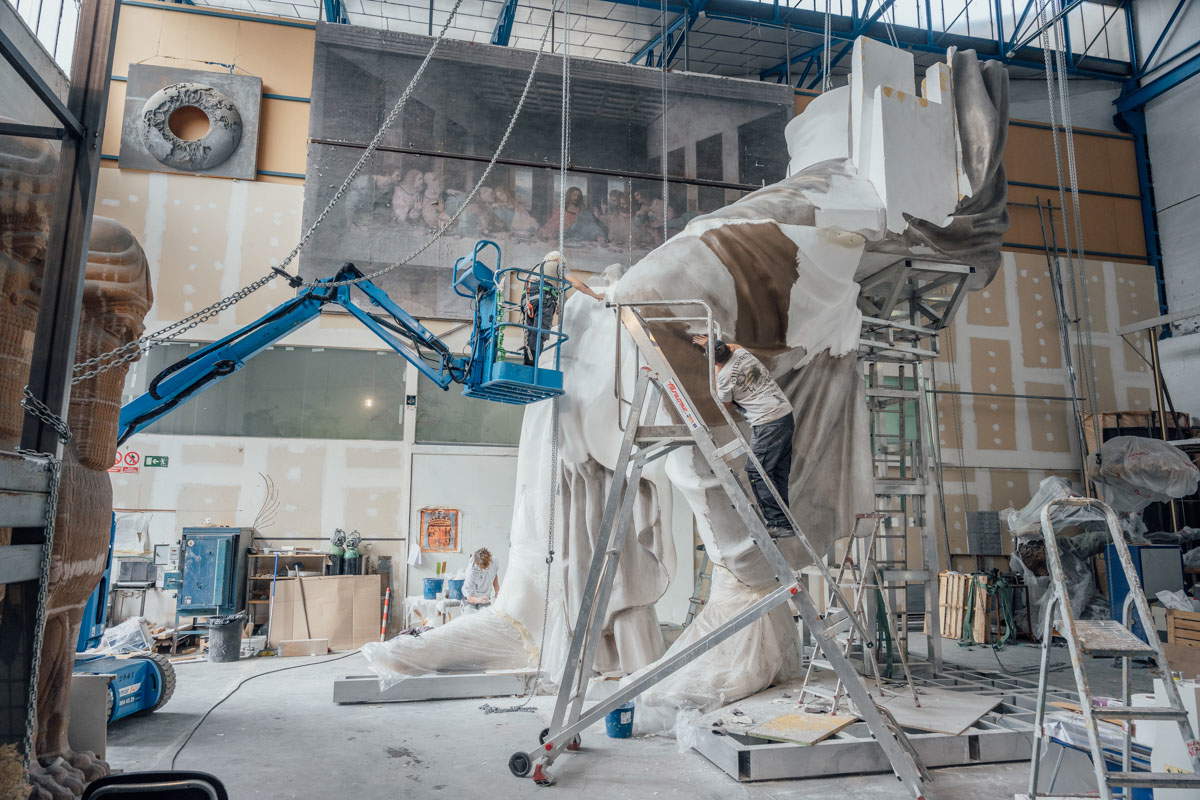
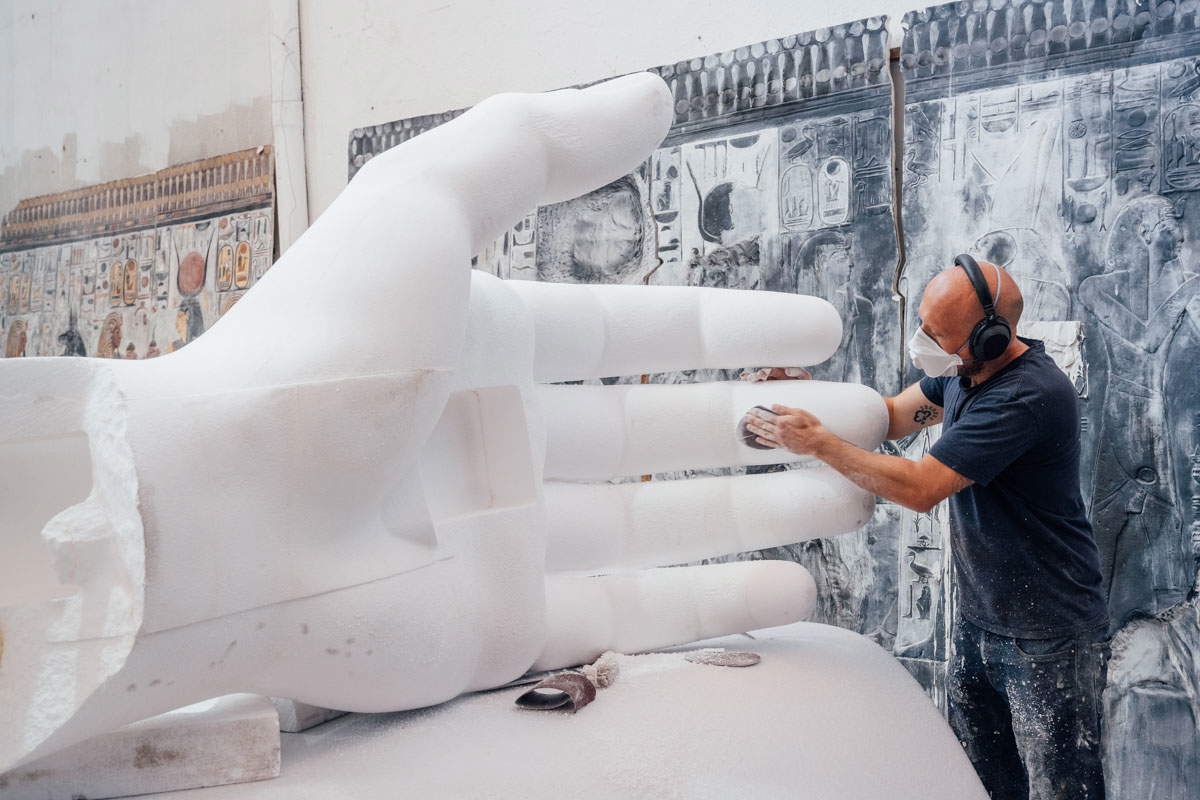

A playground for contemporary artists
“Factum Arte is a real playground for contemporary artists,” explains Giulia Fornaciari, a young Italian who for the past few years has been in charge of communications for Factum Arte and its “sister” foundation, Factum Foundation, also based in Madrid. “This is the perfect place where great artists like Marina Abramovic, Marc Quinn and Shezad Dawood, just to name a few, can develop their creative ideas in total freedom, in dialogue with Factum’s know-how and with the help of the most advanced digital technologies.”
Factum Arte was founded in 2001 by Adam Lowe, a British artist in love with Spain, together with Spanish friends Manuel Franquelo, an engineer and exponent of pictorial photorealism, and Nando Guereta, a technology expert. It is an endeavor designed to offer contemporary artists technical and operational solutions to their creative needs, without sacrificing ancient wisdom and traditional craftsmanship. It is a true permanent workshop , capable of handling the entire creative process: from the conceptual stage to the physical production of an artwork (or series), which is treated here with the same care as a contemporary design object.
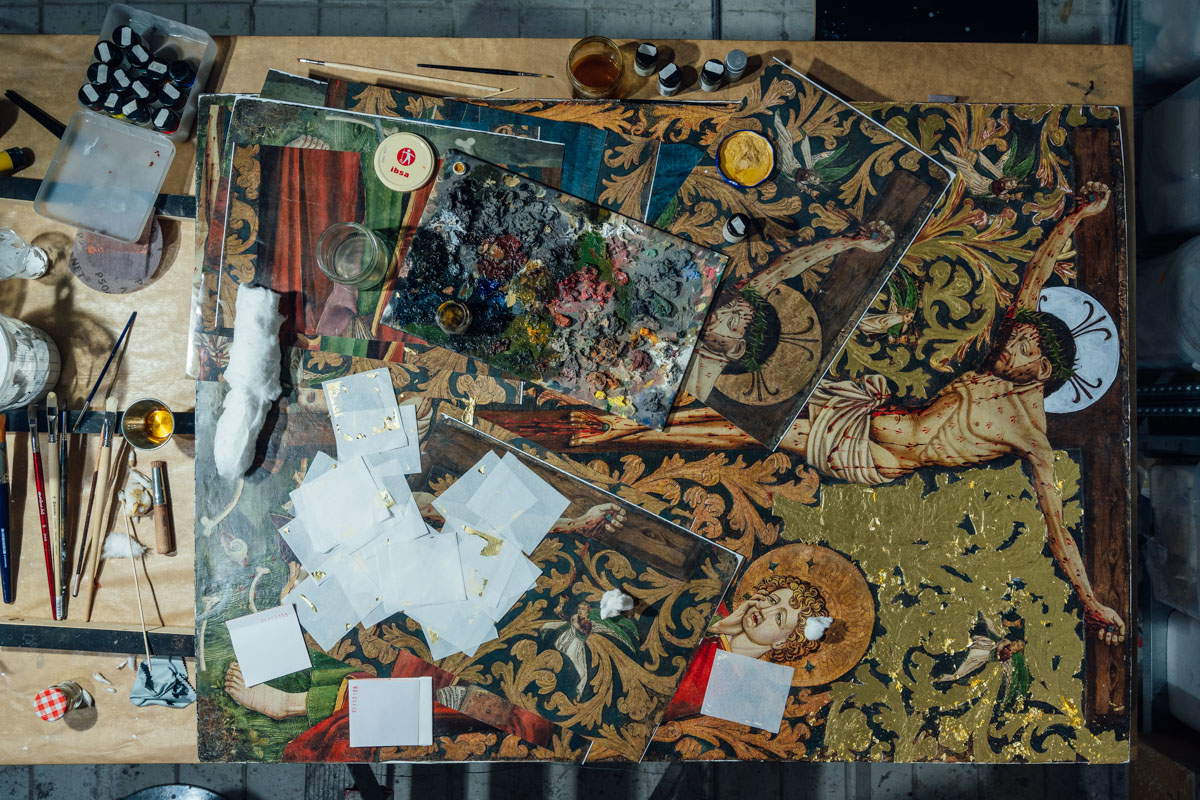
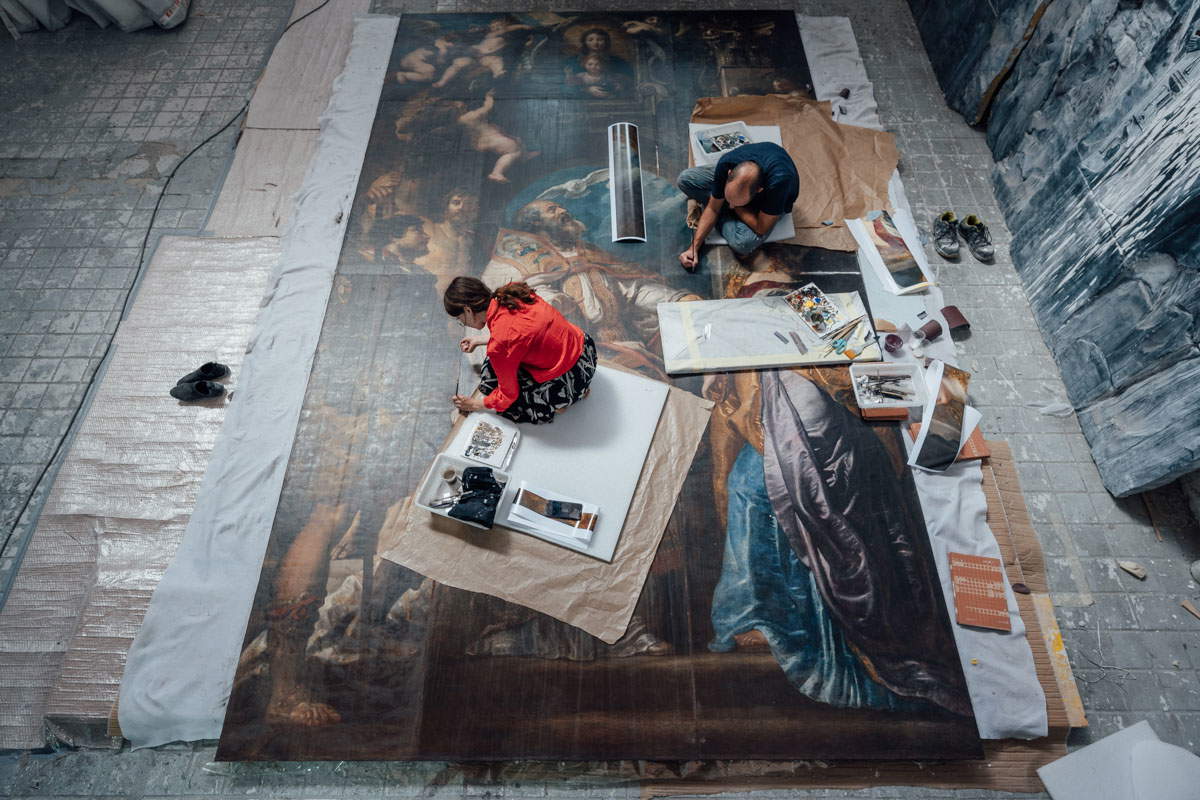
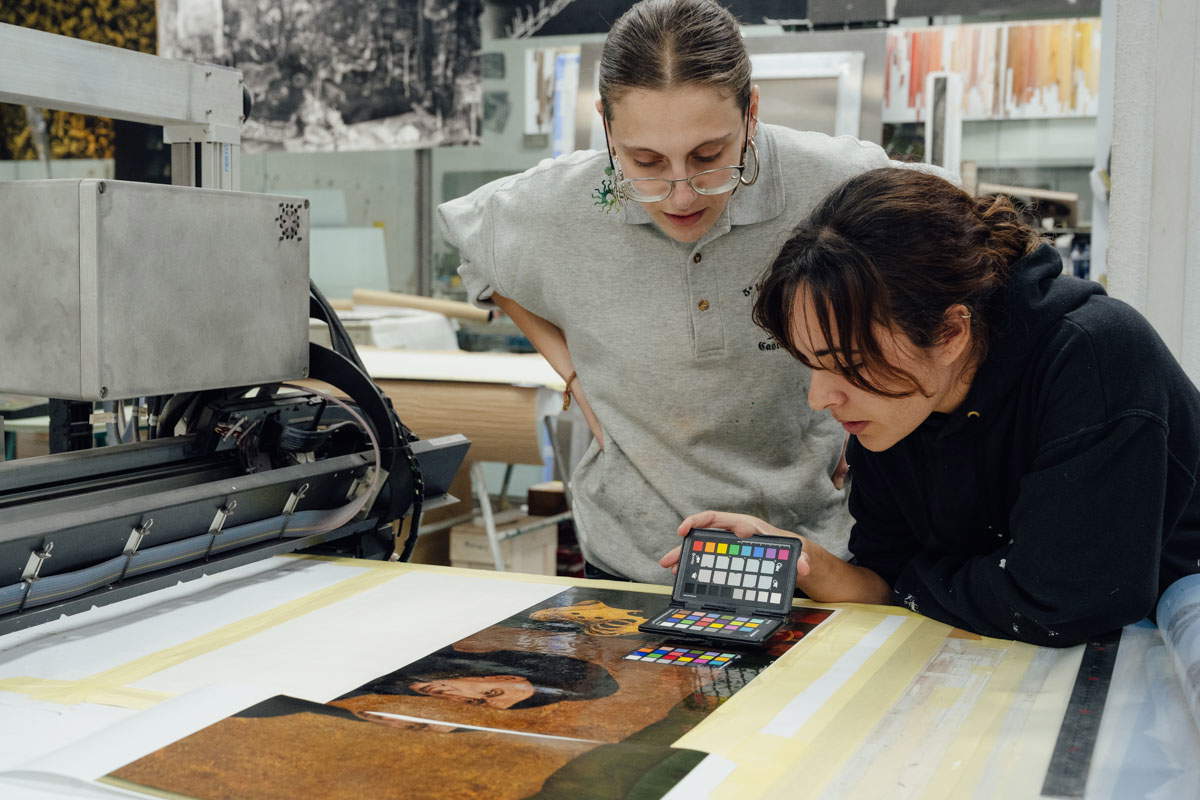
An interdisciplinary approach
The approach is both theoretical and practical, but above all it is interdisciplinary. In Madrid, in fact, Lowe has brought together in recent years some sixty excellent international professionals with diverse talents: some from the world of fine arts, such as painters, sculptors and restorers; others from more technical backgrounds, such as architects, engineers and computer scientists, who are dedicated to I+D, research and development of new technologies. “Factum combines technological and digital skills with experience in craftsmanship, two fundamental aspects of creativity and complementary to each other,” explains Juan Carlos Andrés Arias, director of the workshop, who has been employed by the San Blas-based company for twenty-two years. Recently, Arias made a copy of Bernini’s St. Sebastian from the Thyssen Museum (a private collection’s repository), using an ancient technique such as the Italian cast, the same one used by Michelangelo, with a newly produced resin. “Bernini is extraordinary because he draws with marble,” adds Juan Carlos, “but to the sight and touch, our sculpture in synthetic material looks identical to the original.”
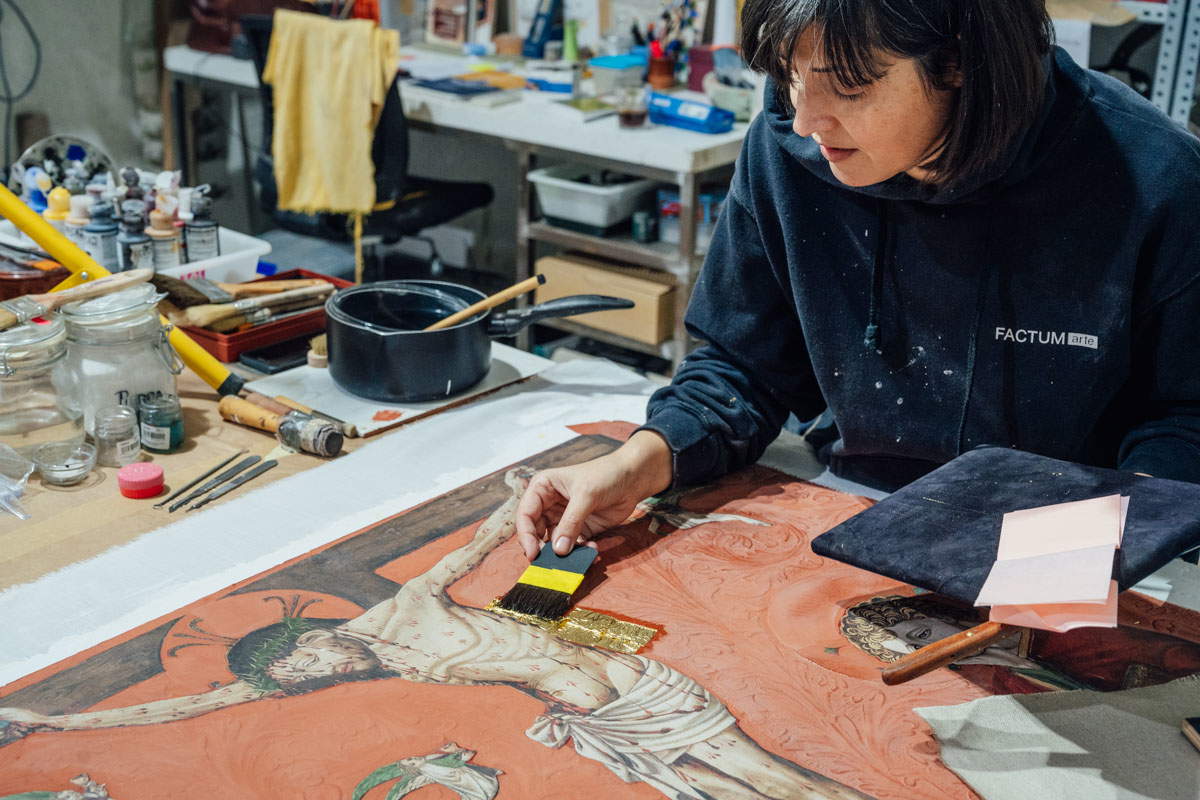
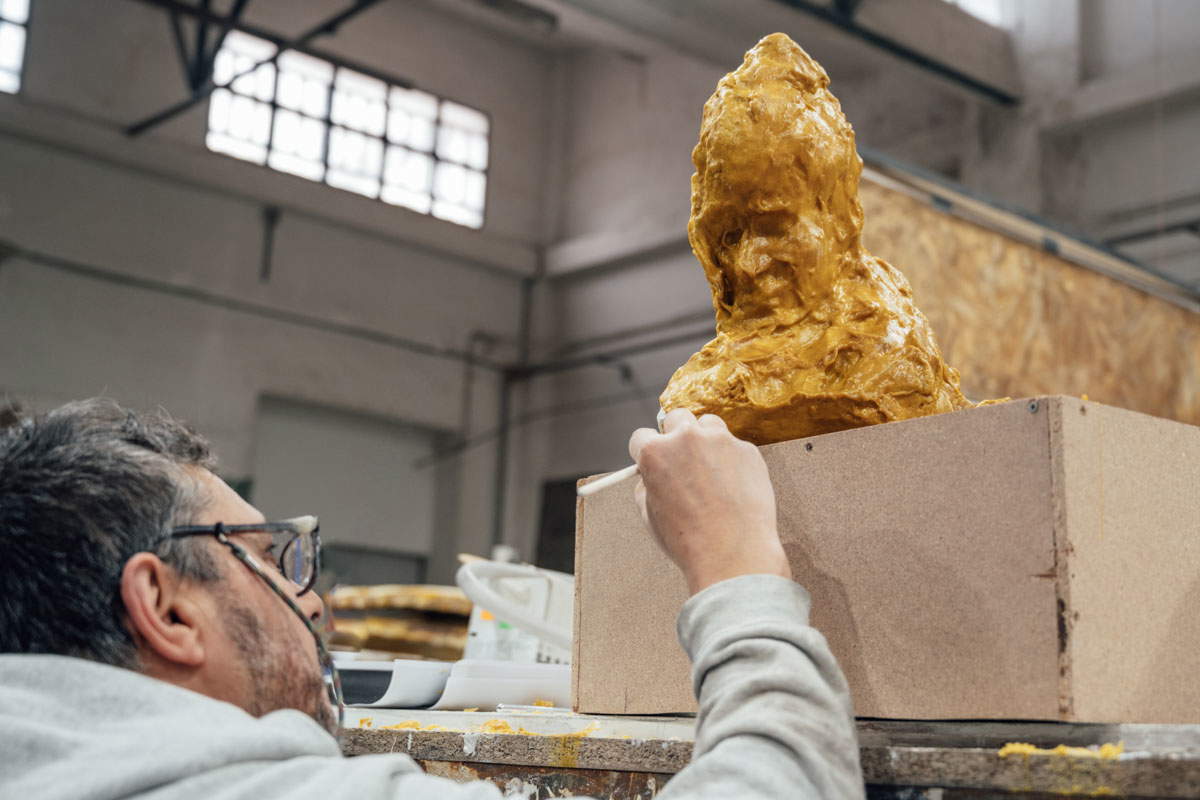
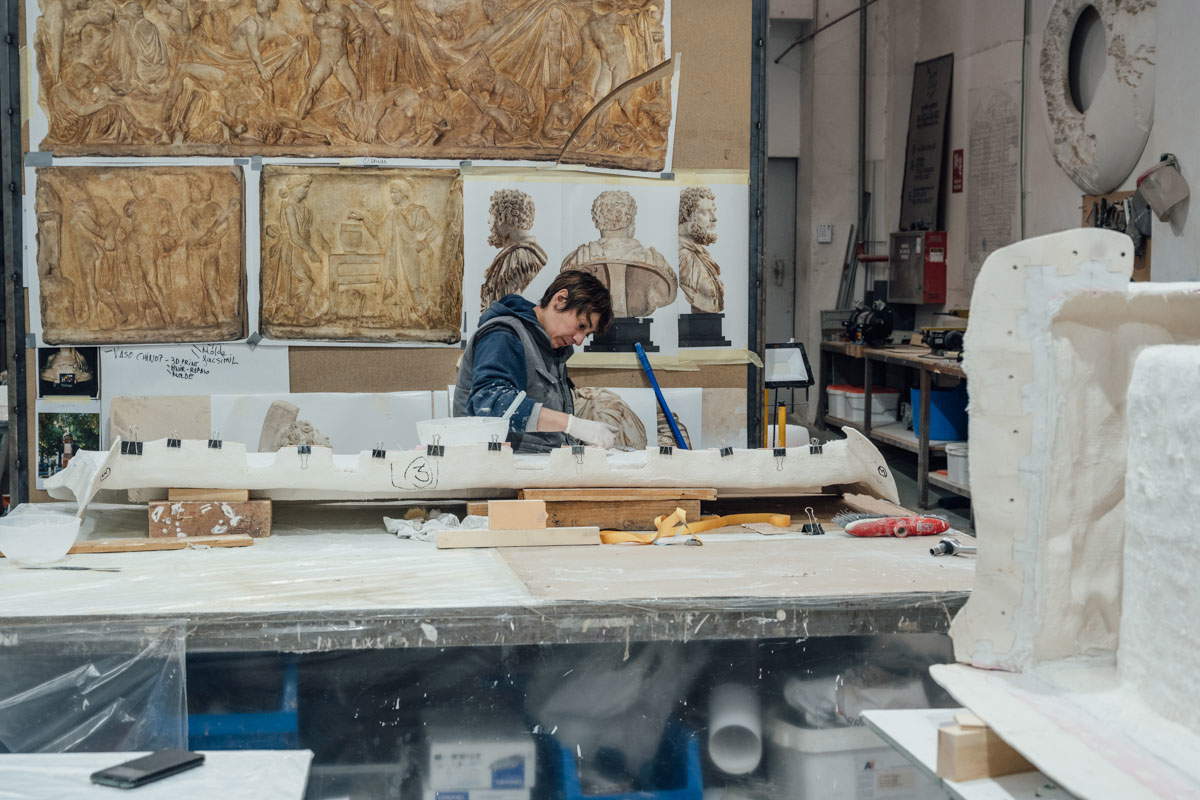
Technology at the service of cultural heritage
Factum adopts the same philosophy (i.e., a high-tech approach that is never invasive) in its study for the preservation of international artistic and cultural heritage. “Adam Lowe is obsessed with mapping the material surface of objects,” Giulia Fornaciari explains, “which he considers a fundamental part of the story of a painting, a statue, a bas-relief, but also a fabric and even a tree... ” In fact, in 2009, Factum Foundation for Digital Technology in Preservation was born, precisely because of a request from the Egyptian government to scan the interior of Tutankhamun’s tomb in Egypt’s Valley of the Temples, with its extraordinary relief paintings and wall hieroglyphs. “If it is possible to scan in 3D, in high resolution, an object, a work of art, a monument,” Giulia continues, “it is also possible to make an identical copy.” Factum made the facsimile of Tutankhamun’s tomb in those very years, later placing it a special pavilion, in the Valley of the Temples itself, to prevent the mass of tourists from compromising the preservation of the original tomb. “The concept of high-definition,” Giulia concludes, “is different, however, from what is commonly understood: for us, it means acquiring as much data as possible, which allows us to replicate an object on a 1:1 scale.”
Factum Foundation studies, therefore, works of art from the past with the technologies of the present, and sometimes (for different needs and at the precise request of the legitimate owners or managers of cultural heritage) creates facsimiles that are identical to the originals in the present moment, that is, with the signs of time, imperfections and past restoration work. The materials used, on the other hand, are different: less valuable, sometimes even artificial and much more resistant; all, however, technically indistinguishable to touch and sight, with absolute attention to the smallest details and rendering of even imperceptible shades of color.
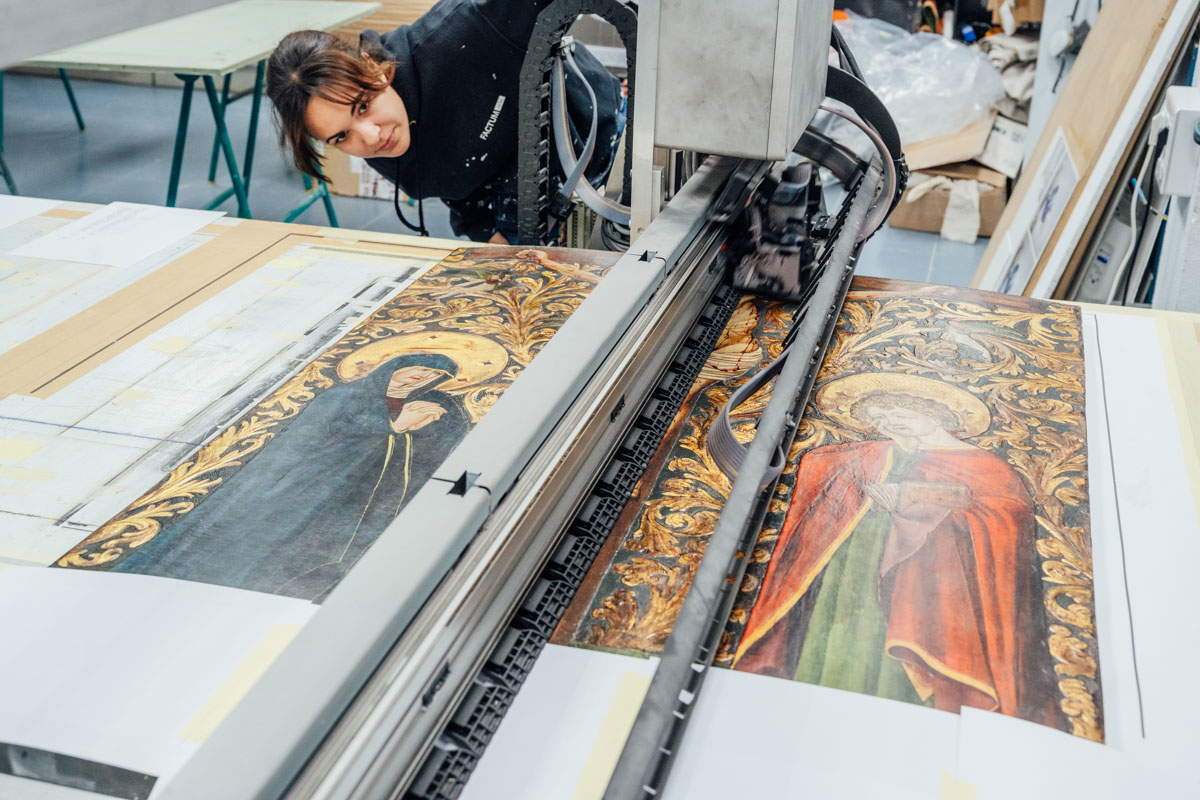
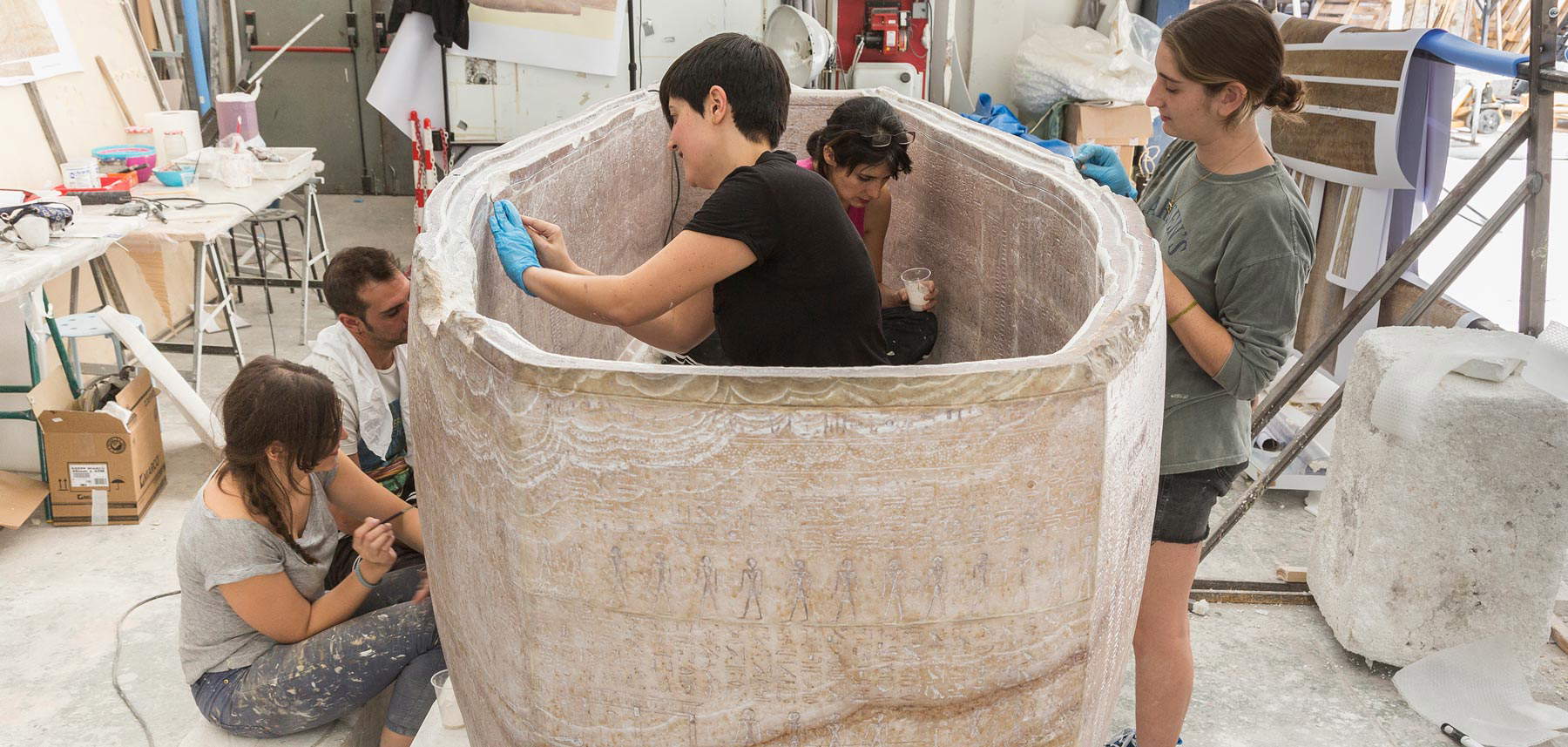
Scanners and non-invasive digital technologies
“Factum Foundation,” emphasizes Carlos Bayod Lucini, director of digitization and projects, “deals with historical, cultural and artistic heritage from the perspective of noninvasive documentation. That is, it develops the technologies needed to scan the works, through very high definition 3D scanners, many of which are not on the market, but directly designed here in San Blas.”
At Factum, the scanners are genuine stars and all have, curiously enough, women’s names. Veronica is a kind of spherically shaped spaceship that allows a person’s torso to be scanned in just three seconds, using a method unique in the world. Not surprisingly, in 2016 this curious device was the subject of an interactive exhibition at the Royal Academy in London to explore the full potential of 3D portraiture using photogrammetry. Lucida, on the other hand, is the name of a handheld instrument that can scan the surfaces of objects in 3D, but only in black and white. The revolution comes, however, with Selene, the next-generation scanner conceived and tested in Factum’s very own in-house I+D department: it enables the scanning and reproduction of surfaces in three dimensions, even in color, thanks to stereo photometry, with four cameras working simultaneously.
The first to test Selene’s effectiveness was the Bodleian Library in Oxford, which, thanks to this type of investigation, discovered in a 9th-century volume traces of a handwritten commentary by Eadburg, a woman, possibly a nun. All these scanners are capable of documenting in very high quality the surface of a painting, with the reliefs, cracks, dirt deposits and even paint drops, reproducing the three-dimensionality of an object conventionally considered “flat.”
Then in the Spanish company there are actual machine rooms containing huge printers, which in turn make it possible to recreate three-dimensional surfaces similar in every way to the canvas of a painting. Thus are born replicas perfect in workmanship, which are by no means forgeries, but facsimiles, that is, contemporary copies, declared as such without intent to deceive.



A data archive for future generations
Adam Lowe, founder and soul of Factum, is an educated and passionate British artist who is clear about the potential and goals of the foundation he has directed for more than two decades now. “We are in the third millennium and no museum in the world is yet able to systematically document the surfaces of its works,” he explains. “There is a lot of talk about digitization, but we are limited to the online presence of image archives that can be accessed and downloaded, often for free, on institutional web pages.”
Lowe insists on the extraordinary opportunity that digital technologies developed within Factum offer public and private institutions to advance the study, protection and preservation of the world’s heritage for future generations. “Previously, experts only looked at artworks and monuments with their own eyes, without any kind of intermediation. Today, various diagnostic methods make it possible to analyze a canvas or a panel, a bas-relief, a sculpture, even a fabric, a book or a manuscript as real objects. Since the 1990s, X-rays and infrared have now been adopted everywhere, in museums and restoration laboratories, but no one yet scans, documents and preserves data about the surface of a work. The first museum to install one of our 3D scanners for this purpose was the National Gallery in London!”
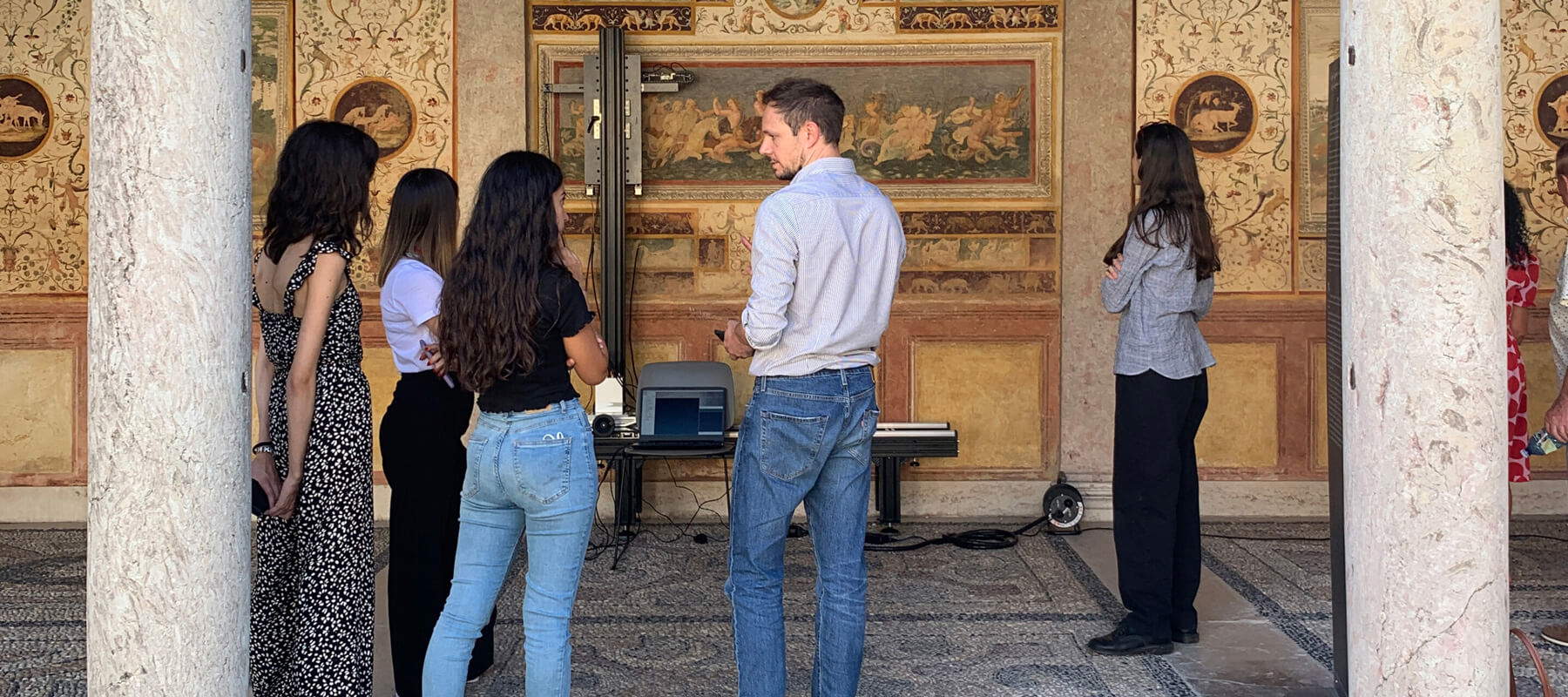
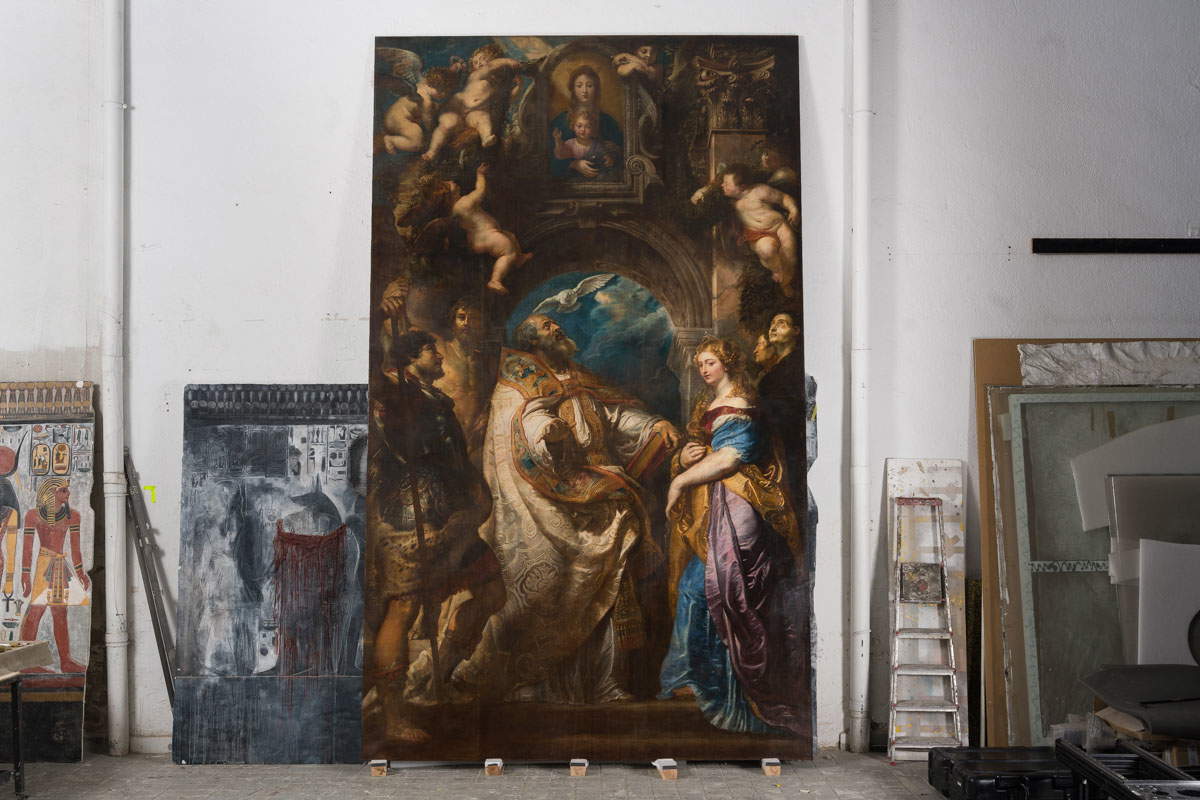
Facsimile, faithful copy to a work of the past
However, the concept of a facsimile, that is, an identical reproduction, made in the present, of an object created in the past, has no meaning of falsity. On the contrary. “All of our work is focused on revealing the truth of a work of art,” Adam Lowe continues emphatically. “We do not create fakes, but declared copies, without any intention of deception. We must separate the concept of originality from that of authenticity: even a facsimile, a replica identical to the original, can contain that aura that can convey the expressive power or aesthetic beauty of a masterpiece.”
The sensitive issue, from a theoretical and especially ethical point of view, however, concerns the ownership of the recorded data and the management of the image rights of the reproduced works. “From an ethical point of view, the problem does not exist,” Giulia Fornaciari concludes, “because Factum does not own the data it acquires through scanning, which belong only to the custodians and owners of the works.”
Factum’s technologies are not only used for reasons of recovery, reproduction or protection of a historical or artistic asset that is lost or in a precarious material condition. Interesting, in fact, is the case study of the Gothic panel in the Museum Catharijneconvent in Utrecht, the work of an anonymous Master of Lamentation: a Crucifixion that today appears to be painted on a blue background, a decorative element in fashion in the 18th century. Upon close inspection, one notices that the four angels on either side of the crucifix barely stand out against the background, as does the red of the drops of blood spilling from Jesus’ body. This means that the panel, dating from the 14th century, probably had a different original background, perhaps gilded. The best way to study and compare the two supposed versions is therefore to create an identical copy, but with a gold background.
Adam Lowe concludes by reiterating his belief in the scientific value of the Factum Foundation and the importance of training young scholars to make the best use of technologies applied to the heritage of the past. “The future depends on how people, institutions, and governments evaluate our technical work from a scholarly and preservation perspective. As a foundation, we depend on raising public and private money. That’s why we also try to document all of the Factum Foundation’s completed projects (an activity that has intensified exponentially from 2019 to the present) by publishing searchable volumes also on our website.”
Warning: the translation into English of the original Italian article was created using automatic tools. We undertake to review all articles, but we do not guarantee the total absence of inaccuracies in the translation due to the program. You can find the original by clicking on the ITA button. If you find any mistake,please contact us.



























